Refinishing your kitchen cabinets is an inexpensive way to breathe new life into your space, transforming a dark and outdated kitchen into a bright and modern one. We asked Nick Slavik, proprietor of Nick Slavik Painting & Restoration Company and frequent This Old House contributor, to walk us through his best practices for kitchen cabinet refinishing. This guide covers all the steps, from prep to paint, to help you get a professional-looking finish.
The ‘Before’ Kitchen Cabinets are Refinished
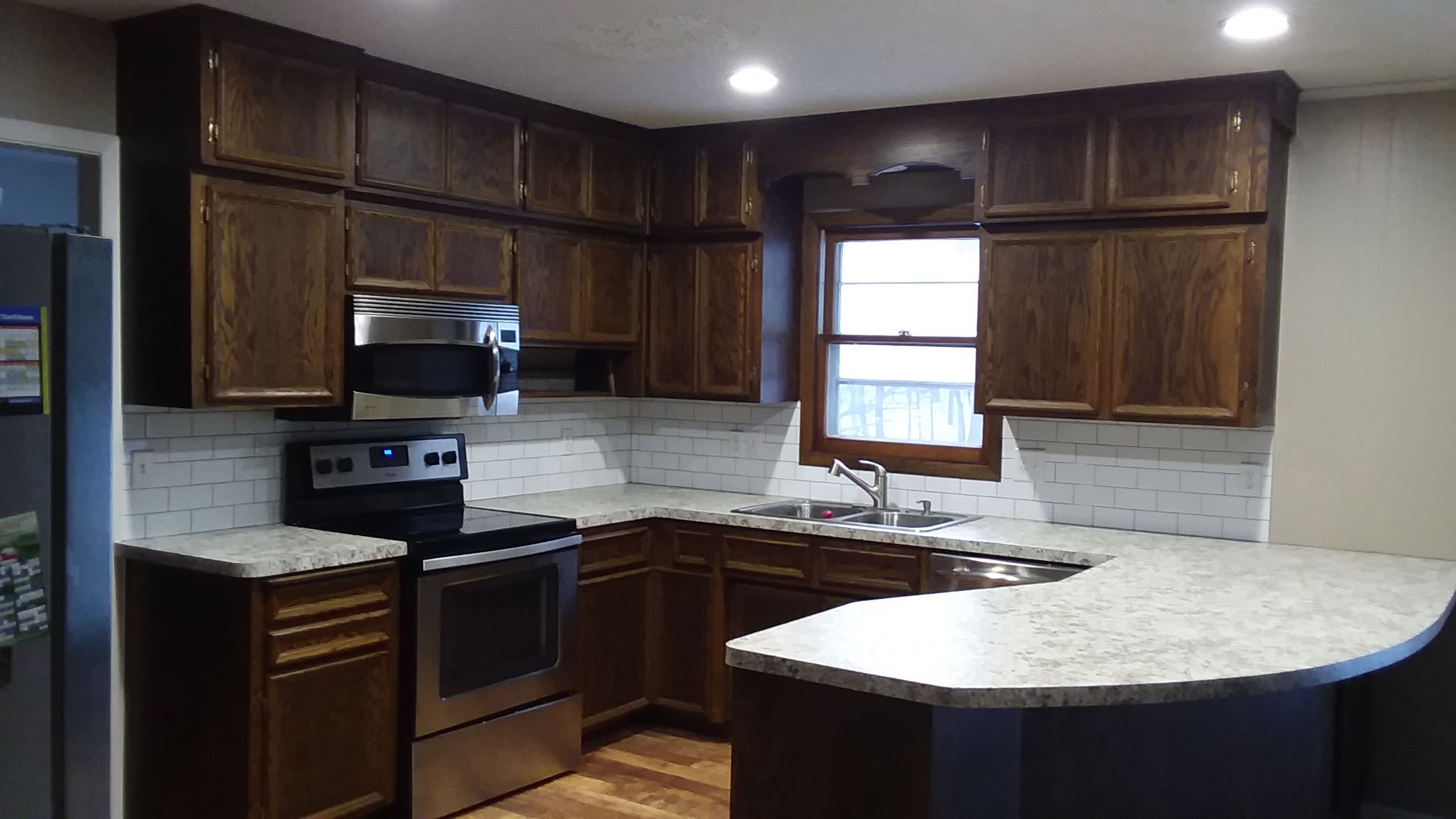
Before you start a cabinet refinishing project, assess the current state of your kitchen. Wood cabinets are often in great structural condition, but a dark finish can make the space feel small and dreary. Refinishing gives you an opportunity to update the look of your kitchen without the cost and hassle of a full renovation. Take some time to envision your desired outcome and think about how a lighter or more modern finish could transform your space. Also, check for any repairs that you might need to take care of before starting the refinishing process.
Protective Measures for Kitchen Cabinets
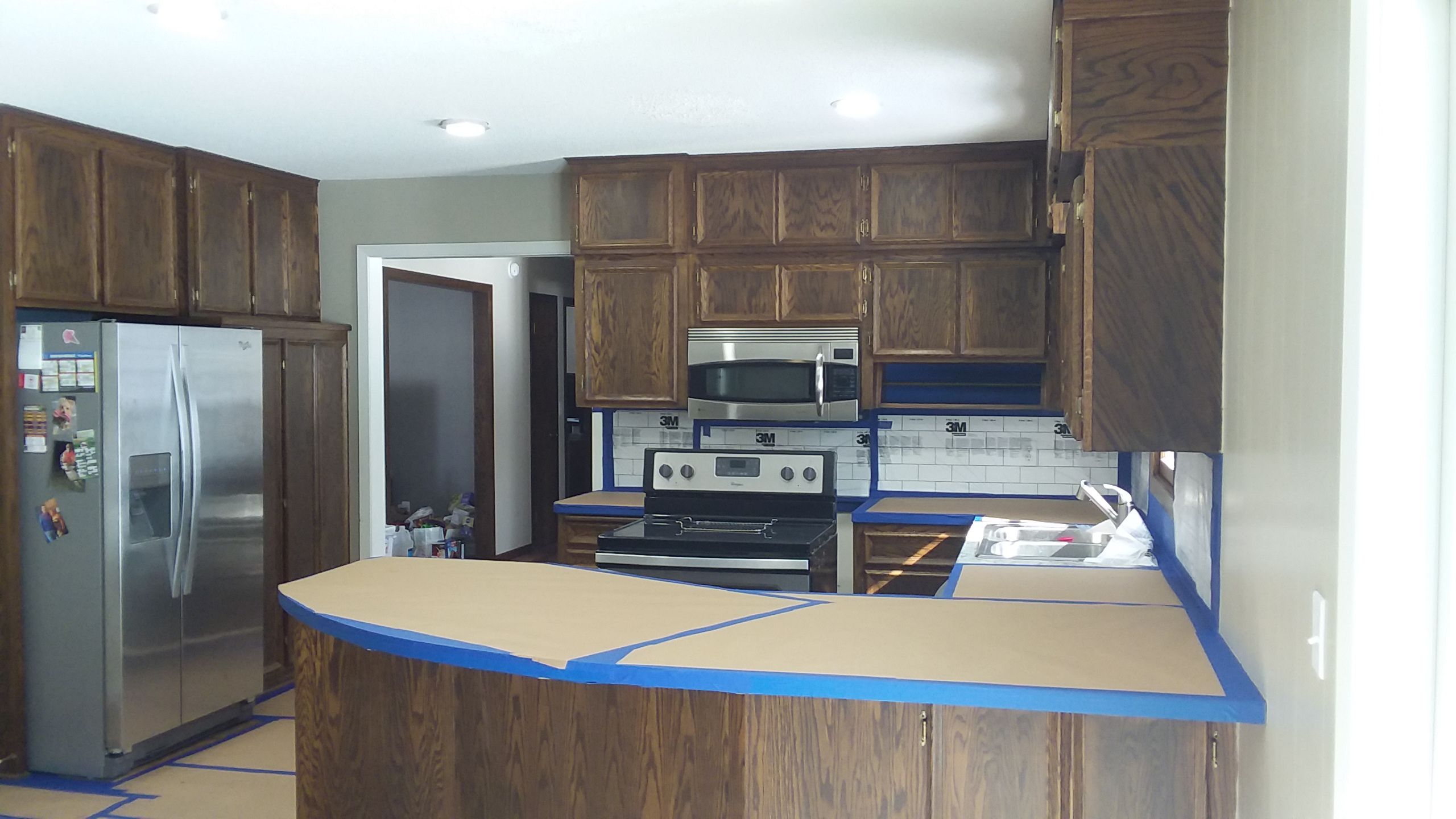
Start by laying down floor protection to prevent any damage from spills or drips. Next, cover your countertops with a protective material that can double as a work surface. While canvas drop cloths are a popular choice, builder’s paper is often a more practical option. It provides protection, is cost-effective, and can be easily disposed of or recycled when the project is complete. Make sure that any furniture or fixtures nearby are covered to avoid accidental splatters.
Preparation To Refinish Kitchen Cabinets
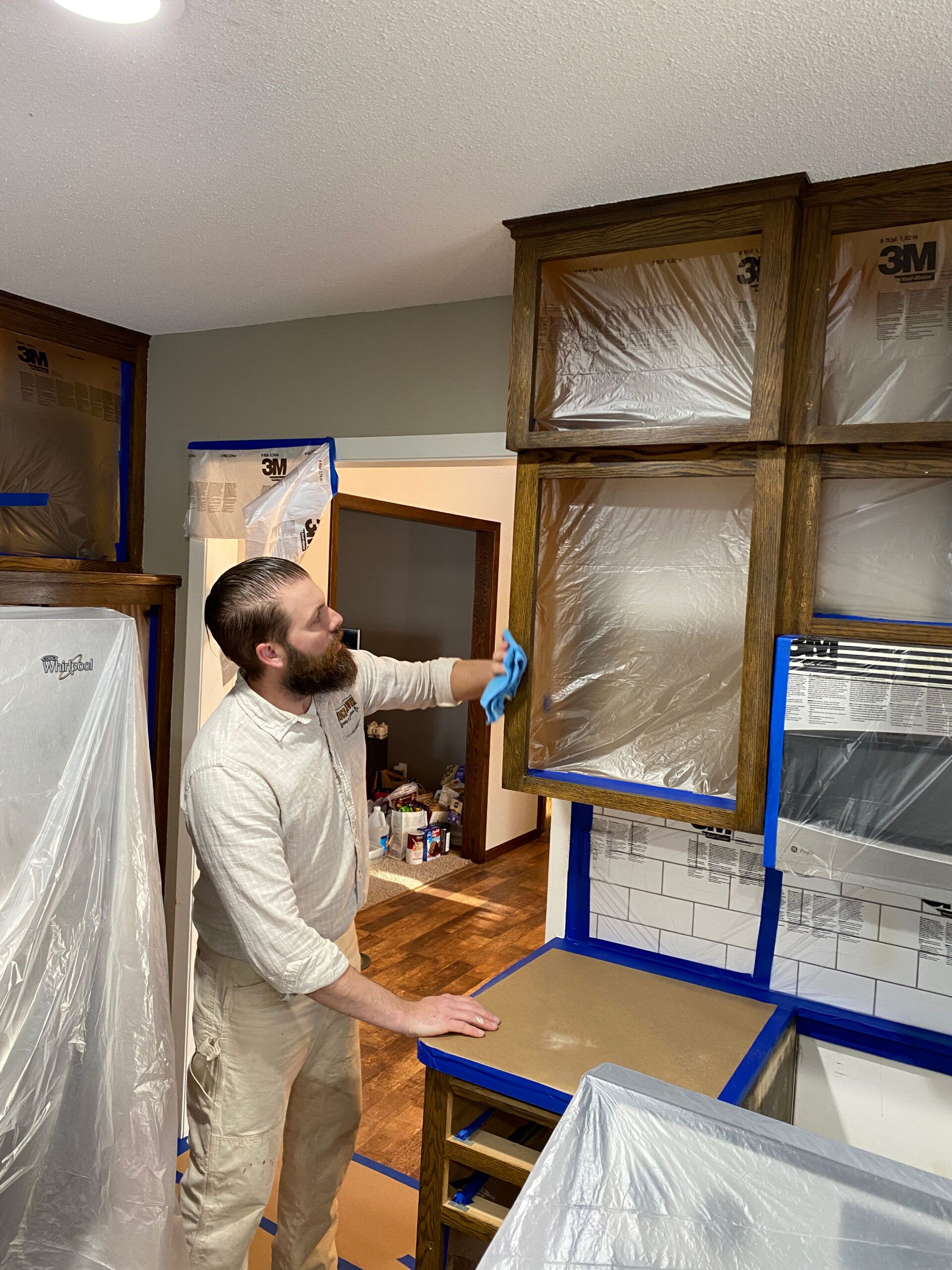
Begin by removing all cabinet doors and drawers and carefully labeling each piece to ensure easy reassembly later. Set up a staging area for cleaning and refinishing these parts. Next, protect the interiors of the cabinet boxes by covering them with plastic and tape. Don’t forget to cover backsplashes and seal off appliances to keep them clean throughout the process. While this level of preparation may seem excessive, it will save you time and headaches in the long run.
Degrease Kitchen Cabinets

Cleaning ensures that your new finish adheres to your cabinets. Start by scraping off any food residue from the cabinets. Then, wash and scrub the surfaces using synthetic steel wool, soap, and water. Trisodium phosphate (TSP) mixed with water is highly effective for stubborn grease. TSP emulsifies grease, making it much easier to remove than with soap alone. After cleaning, allow the cabinets to dry completely before moving on to the next step. Wear gloves during this process to protect your hands from harsh chemicals.
First Sanding of Kitchen Cabinets
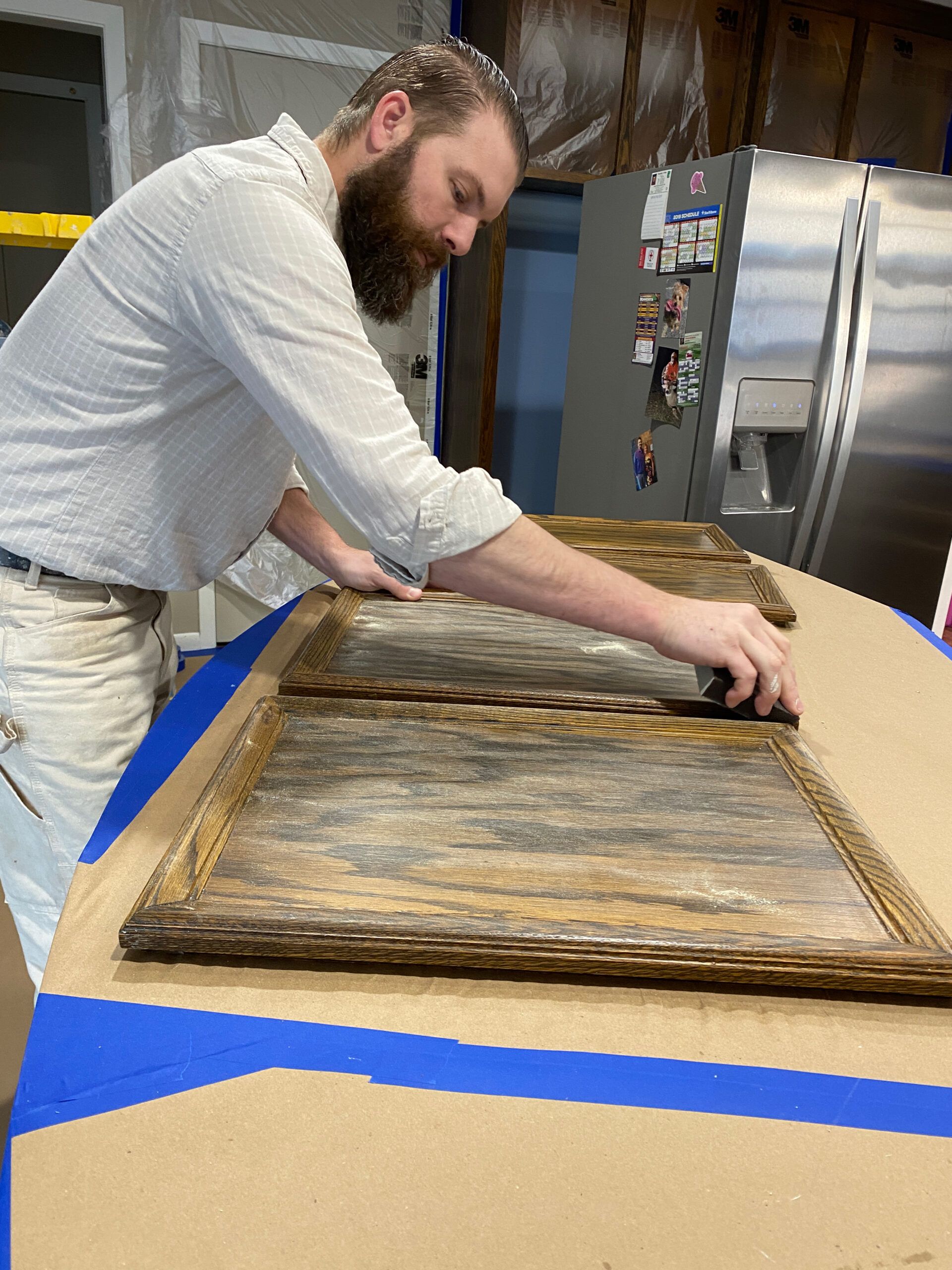
The SVT process—sand, vac, and tack—prepares your cabinets for refinishing. Sand the cabinets with medium-grit sanding sponges or 180-grit sandpaper on a random orbital sander. While it’s not necessary to remove all of the existing finish, you need to scuff the entire surface to give it “tooth” for better adhesion of the new finish. After sanding, use a shop vac with a brush attachment to remove most of the dust. Then, use a tack cloth to remove any remaining dust particles. For best results, use a slightly damp microfiber cloth. Be careful not to leave any water spots on the wood.
Primer for Kitchen Cabinets
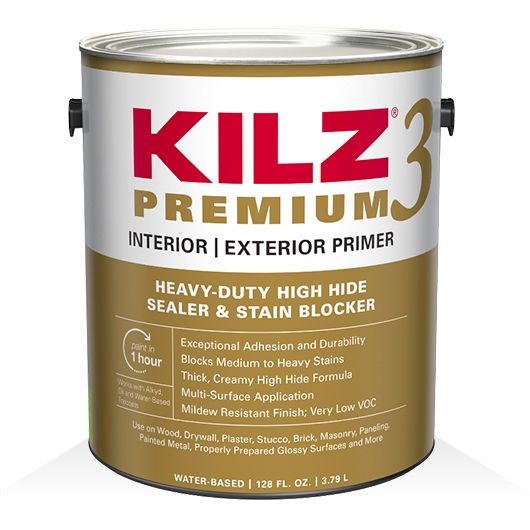
Now it’s time to prime your cabinets. A high-quality primer like KILZ 3® Premium Primer offers excellent adhesion and stain-blocking properties. This type of primer is easy to apply, dries quickly, and has low odor, allowing you to remain home during refinishing. When applying primer, aim for uniform coverage and be thorough in your application. The primer creates a solid foundation for your topcoat to promote better adhesion and a more even final appearance. Avoid applying too much primer at once, as it may lead to uneven textures.
Application of Refinishing Kitchen Cabinets
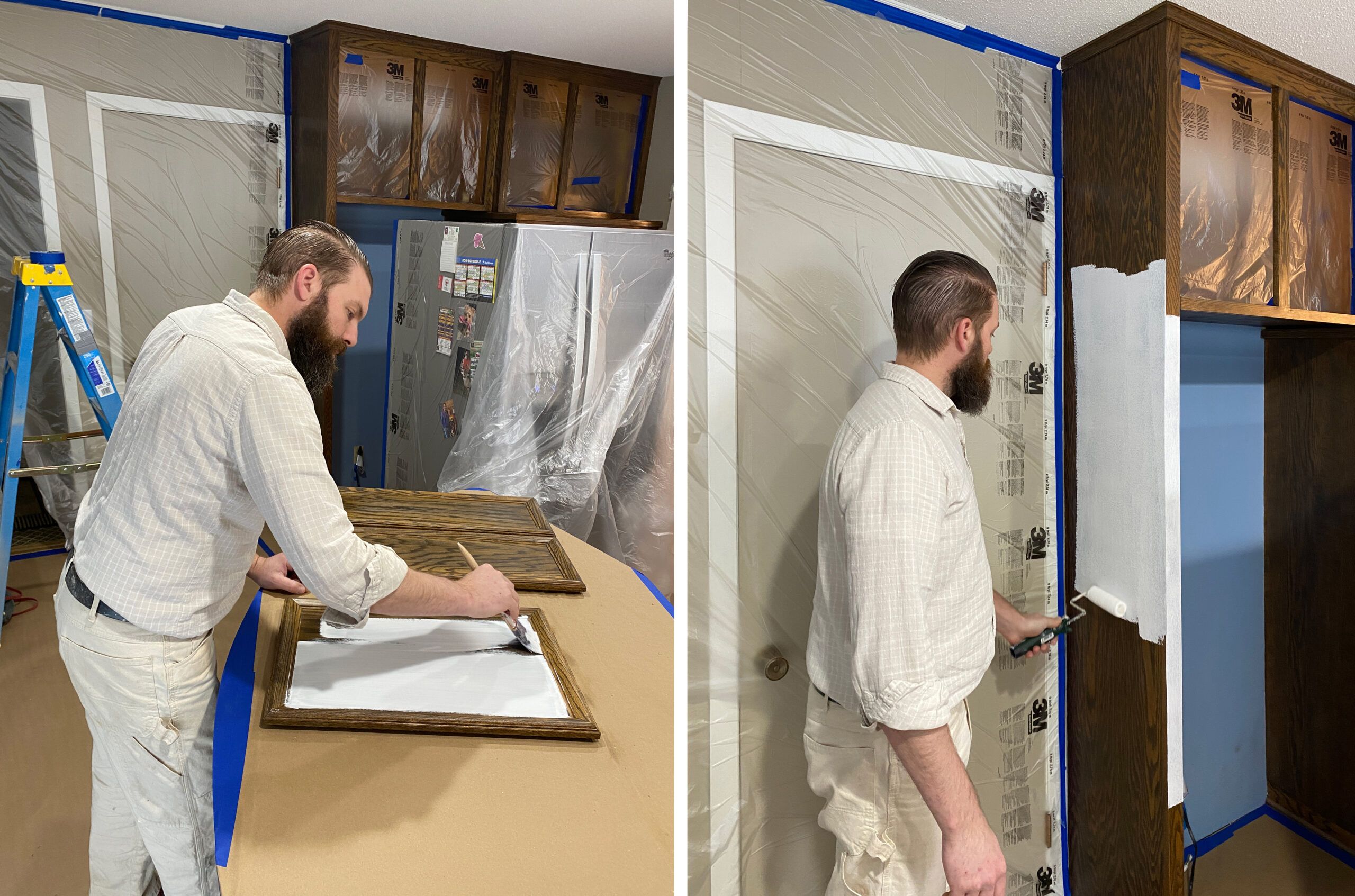
The right tools can make a significant difference in the quality of your finish. For brushes, opt for those with super-fine nylon bristles, which will minimize visible brush marks. Expect to invest $15 to $25 for a good-quality brush. For rollers, Slavik recommends a high-quality woven cover with a nap of 1/4 or 3/8 inches. This will prevent shedding and provide a smooth finish. Apply the primer evenly, working in thin, consistent coats. Whether you choose to brush, roll, or spray, take your time to ensure thorough coverage without drips or runs. Pay attention to corners and crevices to make sure no spot is left untreated.
Second Sanding for Kitchen Cabinets
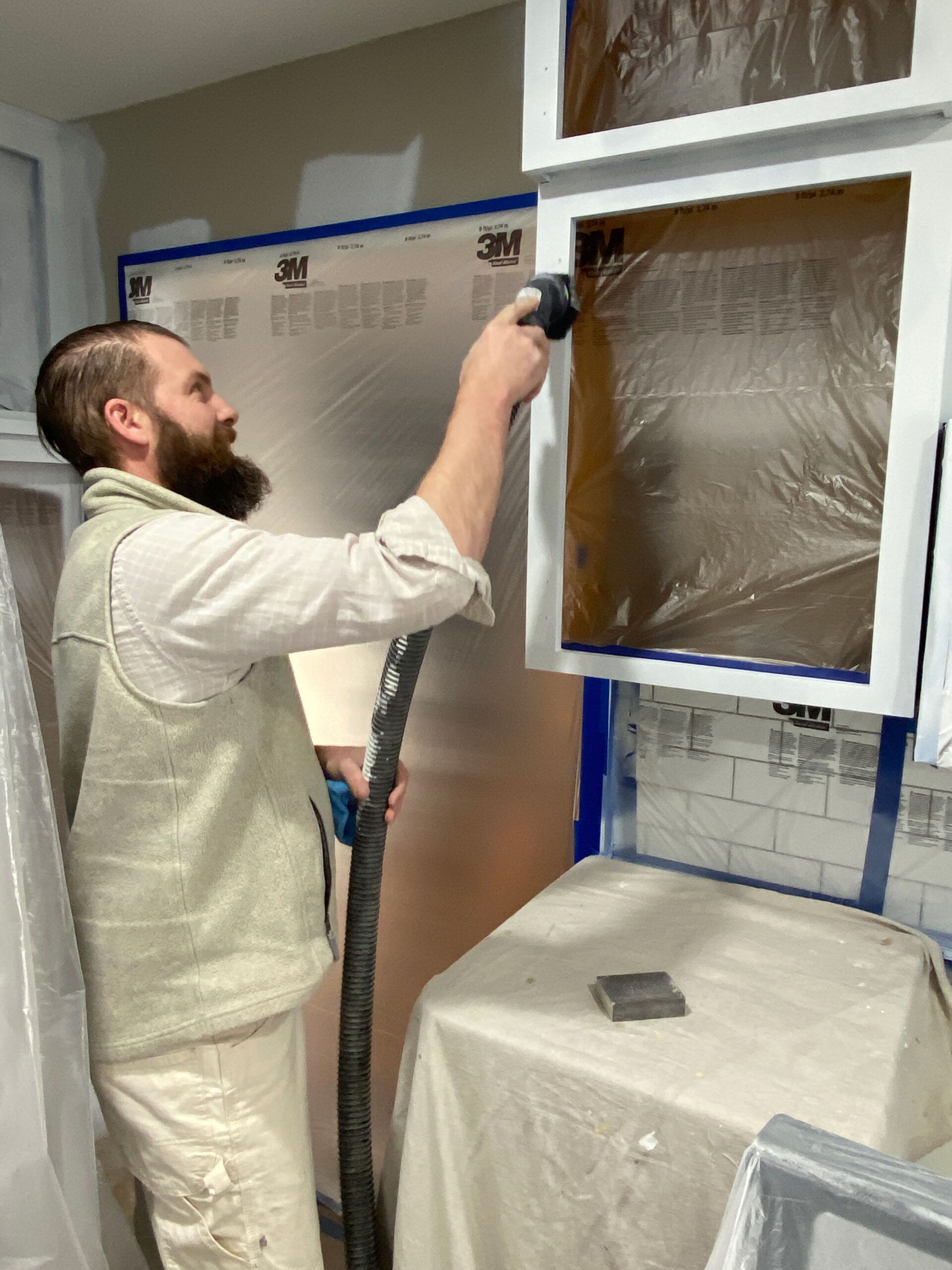
After the primer has dried completely, it’s time to repeat the SVT process. Lightly scuff-sand the primed surfaces to promote topcoat adhesion and remove minor imperfections. Vacuum and tack-rag the surfaces again to ensure they’re completely clean and dust-free. This is the ideal time to caulk any cracks where the cabinets meet walls or crown molding. Caulk adheres better to primed surfaces than bare wood. However, never caulk the floating panels on cabinet doors, as these need to move with seasonal changes in temperature and humidity. Allow any caulk to dry fully before proceeding to the next step.
Paint for Kitchen Cabinets
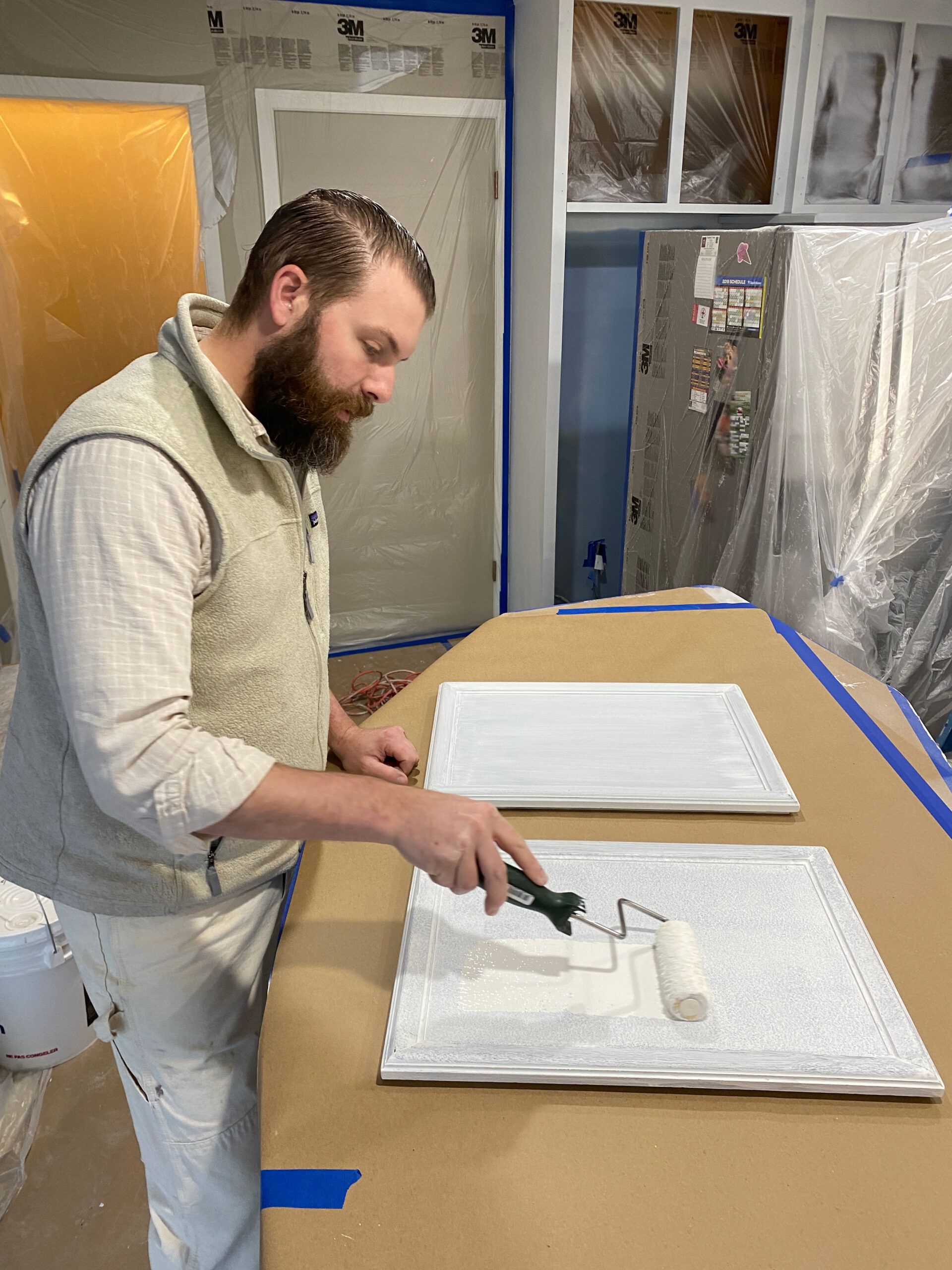
With your cabinets primed and prepared, it’s time to apply the topcoat. Use the same high-quality brushes and rollers you used for priming. Begin by coating the back sides of the doors, laying them flat to allow the enamel to level and create a smooth finish. Once dry, flip the doors and coat the fronts. When painting the cabinet boxes, try to maintain a wet edge to avoid visible start and stop points. Apply a second topcoat after the first has dried completely. This will ensure you have even coverage and a consistent sheen across all surfaces. Paint in a dust-free environment to avoid particles sticking to the fresh paint.
Re-Assemble Kitchen Cabinets
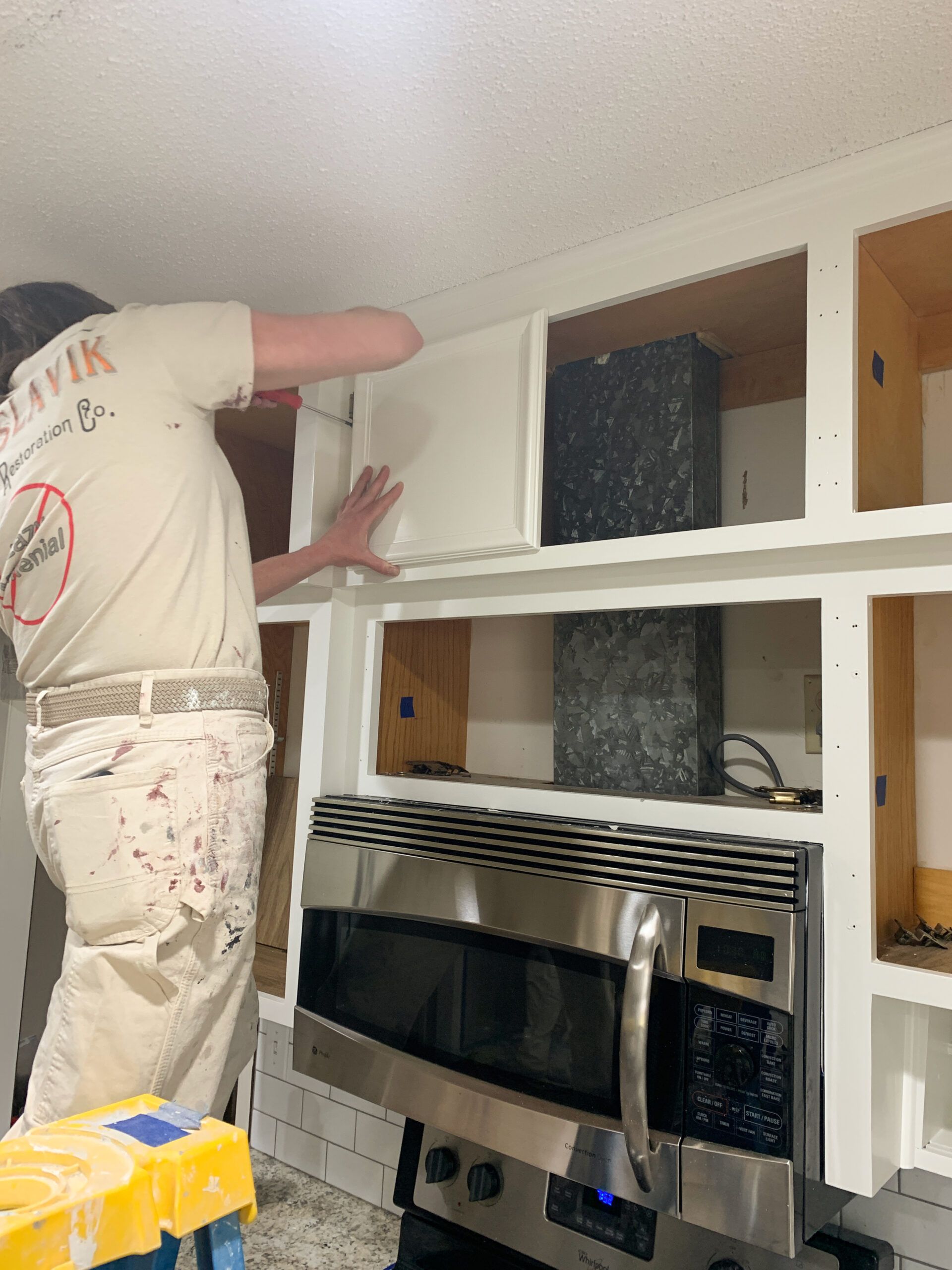
Once the paint has dried enough that you can handle the pieces, you can begin the process of reassembling your kitchen. Start by carefully removing the tape and plastic from the cabinet boxes. Install the doors one by one, referring to your labeling system so that you return each door to its proper place. Use hand tools rather than power drills when reattaching hardware to avoid stripping the screws. Install any new knobs or pulls, making sure they’re straight and properly aligned. As a finishing touch, install new clear rubber bumpers on the doors and drawers. This small detail can make a big difference in the function of your newly refinished cabinets. Don’t rush through this process.
Kitchen Cabinets: Finishing Touches
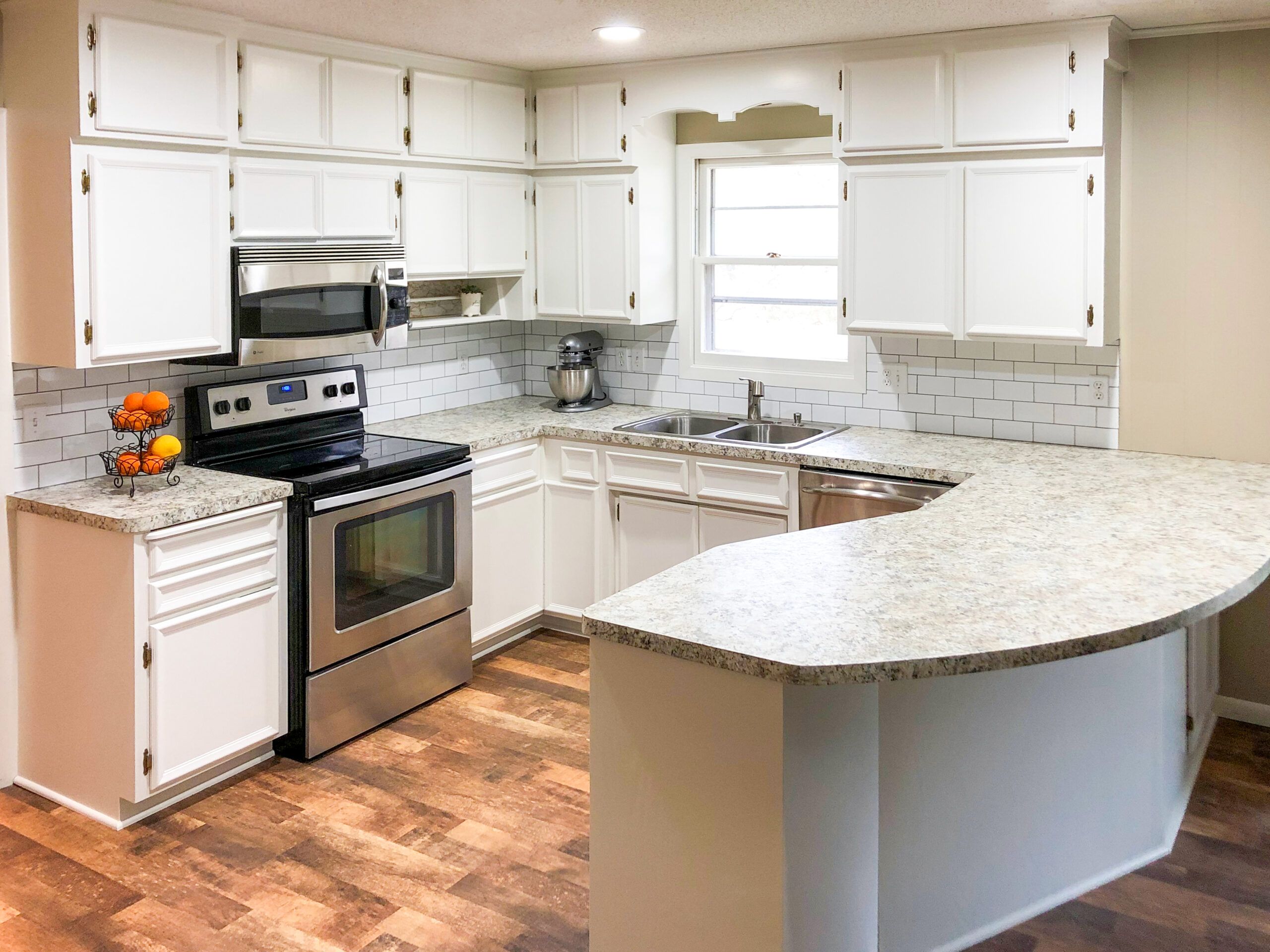
Before the job is complete, take a final walk-through of your kitchen to look for any areas that may need touch-ups. Pay close attention to edges, corners, and any spots that you might have missed during the painting process. Once you’re satisfied with the results, remove any remaining protective coverings from countertops, appliances, and floors. Step back and admire your handiwork. Your newly refinished cabinets should give your kitchen a fresh, updated look.
